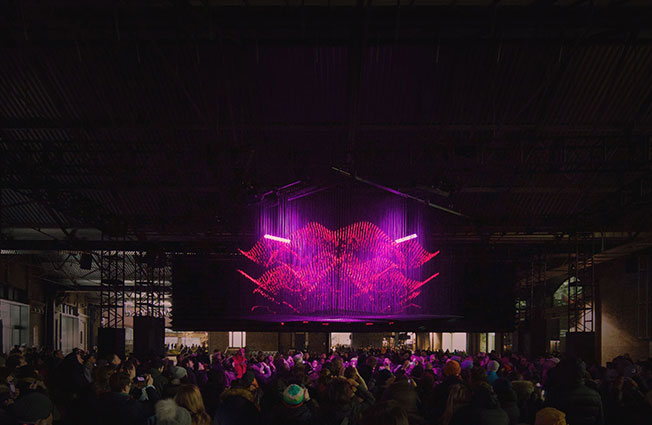Text by CLOT Magazine

Architecture Social Club is a design collective working at the intersection of digital, art, architecture, and engineering that was set up by Satyajit Das. Trained as an architect at the Royal College of Art and the University of Cambridge, Satyajit spent four years and a half working on high-level corporate projects for Norman Foster’s architecture firm. After this time, he realised that he wanted to find a more collaborative structure studio ‘where multidisciplinary creatives – architects, coders, stage designers, engineers, musicians and so on – could work together to create imaginative spatial interventions.’ For them, each project is a new learning experience. They tell us over Email that when a project or idea comes up they always start with research to develop the concept without thinking too much about the execution techniques.’ Thinking out of the box lead them to ‘an adventurous and unpredictable path of development with unexpected outcomes, often using technologies and skills in unusual ways.
With projects like Ensemble (in collaboration with Microsoft and Centrica), and Synaesthesia (in collaboration with Harvey Nichols, in which they developed an installation inspired by fragrances), one of their latest projects is Aether 2.0, a collaborative project with musician Max Cooper.
For Aether 2.0 Architecture Social Club wanted to create a project that was adaptable and had the ability to convey a large range of emotions. They wanted the experience to be a series of feelings, so they designed the content and curated the music with Max Cooper ‘to create a story about human endeavour, which [we] broke down in chapters and built a story arc related to that. The chapters explore themes such as the initial discovery of fire to the mathematical theory, to structures leading all the way to over urban generation and ultimately to a reflection of achievements and hours,’ they told CLOT Magazine when we went through the intellectual process behind the piece.
Technology-wise, we wanted to use lasers, because of the high but focussed output of light and it took a lot of experimenting and prototyping of both the physical installation and the laser programming to get Aether to where it is now. The latest Aether edition has 12km of fiber, all specially treated to give it its crystalline effect.


Aether 2.0 is a constantly evolving beast. They are now rebuilding the content and tweaking the techniques to facilitate the piece’s development for MUTEK Mx Festival in Mexico City later in November. And building an “evolving beast” like Aether 2.0 has its own [design-wise and technical] challenges there were some parameters we needed to work with – ie. it needed to be tourable, how could we transport this much fibre without it tangling. Finding ways it could be installed very quickly was another challenge (their record to date is 3 hours), and also they had to work out how to manipulate the lasers in a way that really worked for the project.
Architecture Social Club was founded in 2015, so as a (relatively) young creative studio all their projects are works in progress. We like to do spread our wings and we don’t really play within one type of playground. We work with musicians, theatres, art galleries and commercial partnerships. We just try to stick to projects that are interesting to us. They said when talking about the future.






